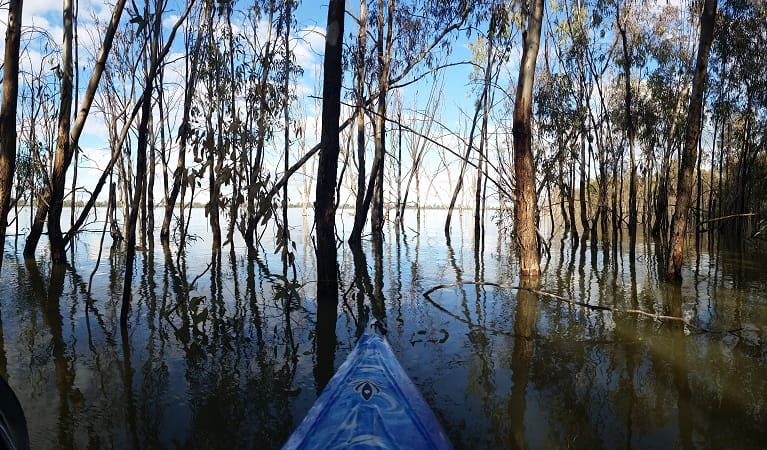Yanga National Park
Overview
Yanga National Park, close to Balranald, features great fishing spots along the Murrumbidgee River. Bring your tent or caravan to stay at the scenic campgrounds. Bird watchers will also enjoy Yanga Lake.
Read more about Yanga National Park
Yanga National Park may be one of the state's newest parks, but this land boasts a long and significant history and Aboriginal families have lived here for a millennia.
From the early explorers, to shearers and rabbit trappers, fishermen and campers – people have flocked to this area for all sorts of reasons. Now it's your turn to camp by the banks of the Murrumbidgee like Burke and Wills once did.
Unbeatable for bird watching, you'll see as many as 150 species of birds in the park’s trees, skies and ecologically-important wetlands. Be sure to check out Yanga Lake Red Gum bird hide too. Acquaint yourself with bygone days at the old Yanga homestead and woolshed or enjoy a spot of fishing by the river. You might even take a guided tour and visit significant Aboriginal cultural sites.
Drop in to the park office in Balranald to pick up information and learn about self-guided tours. Park staff are always happy to answer your questions and offer expert advice on camping or bushwalking in the area. If the park office is unattended you can also find plenty of visitor information at Balranald Discovery Centre. The Cook’s Cottage exhibition is open daily and you can wander around the grounds of the homestead.
Local alerts
For the latest updates on fires, closures and other alerts in this area, see https://www.nationalparks.nsw.gov.au/visit-a-park/parks/yanga-national-park/local-alerts
Map
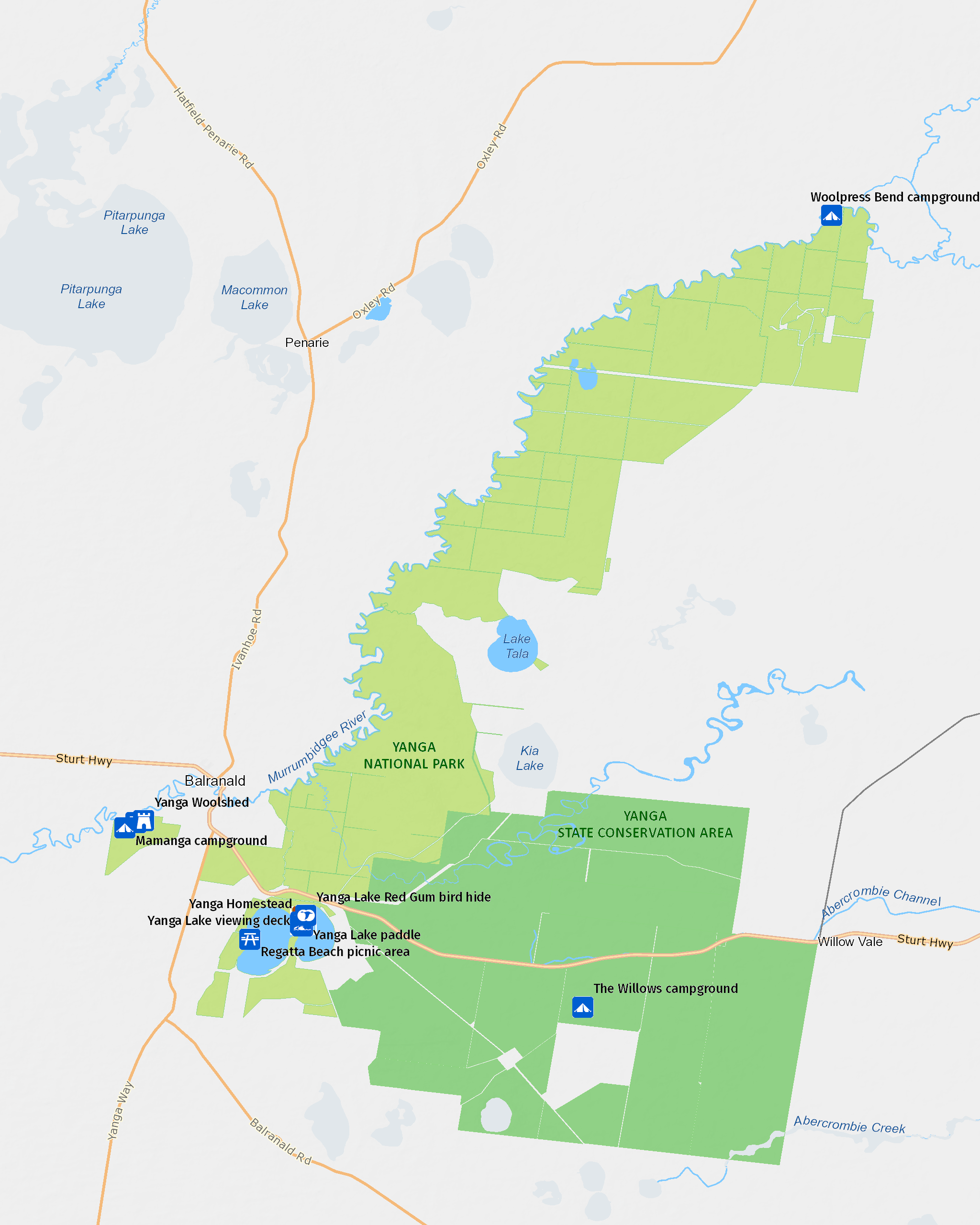
Map
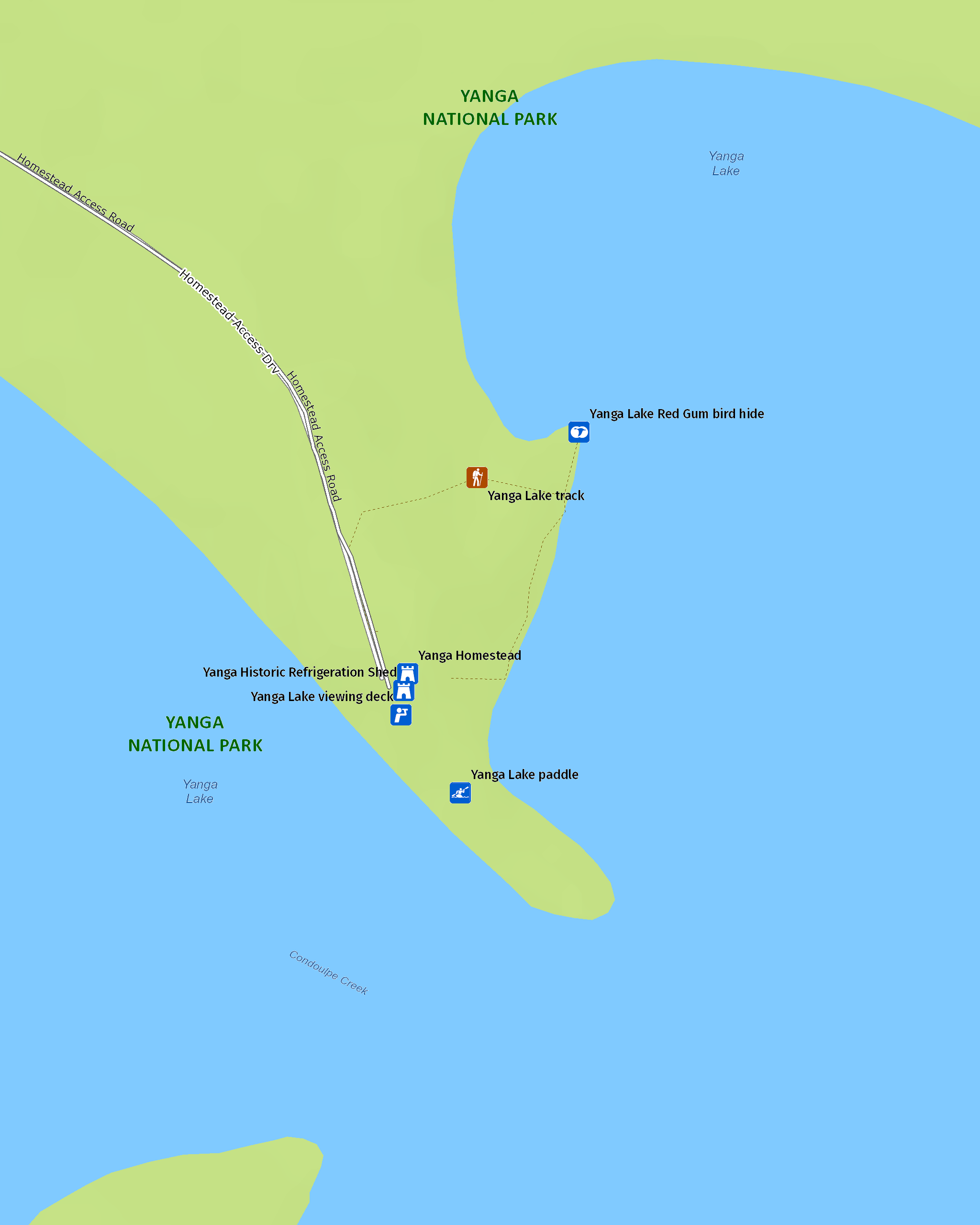
Map legend

Contact
- in the Murray-Riverina region
Yanga National Park is open Sunrise to Sunset but may have to close at times due to poor weather or fire danger.
Yanga Homestead Precinct is open 8.30am - 4.30pm.
-
-
Yanga National Park office
03 5020 1764
Contact hours: 8.30am to 4.30pm daily. - 38773 Sturt Highway, Balranald NSW 2715
-
Email: npws.lowerdarling@environment.nsw.gov.au
-
Yanga National Park office
-
-
Buronga office
03 5021 8900
Contact hours: Monday to Friday, 8.30am to 4.30pm. - 4 Melaleuca Street, Buronga NSW 2739
-
Email: npws.lowerdarling@environment.nsw.gov.au
-
Buronga office
Visitor info
All the practical information you need to know about Yanga National Park.
Getting there and parking
Get driving directions
From Balranald, take the Sturt Highway east for 7km. Turn south onto Old Sturt Highway at Yanga rest area. Turn left at the Yanga National Park sign and drive 2km along the main road where you will arrive at the park office and Yanga Homestead.
Parking Show more
- Regatta Beach picnic area See on map
- Yanga Homestead See on map
- Yanga Lake viewing deck See on map
- Yanga Woolshed See on map
- Yanga Woolshed picnic area See on map
Road quality
- Unsealed roads
Vehicle access
- 2WD vehicles
Weather restrictions
- Dry weather only
Best times to visit
The locals will tell you it can get pretty hot out this way, so you may wish to time your visit to avoid the summer heat. Temperatures during autumn, winter and spring are more moderate - just be sure to check the forecast as roads can become inaccessible in wet weather.
Spring
A great time to see the woodland birds - be sure to bring your binoculars.
Facilities
Toilets
- Mamanga campground
- Regatta Beach picnic area
- Yanga Homestead
- Yanga Woolshed
- Yanga Woolshed picnic area
Picnic tables
- Mamanga campground
- Yanga Homestead
- Yanga Lake Red Gum bird hide
- Yanga Lake viewing deck
- Yanga Woolshed picnic area
Barbecue facilities
Boat ramp
Maps and downloads
Permitted
Gathering firewood
Domestic firewood may be collected in designated areas of Yanga National Park from 1 April to 30 September with a permit. Permits are available to permanent NSW residents that live in the Riverina Bioregion and Balranald Shire. Learn more or apply for a permit.
Prohibited
Hunting and shooting native animals or poaching wildlife is prohibited. Report illegal activities.
Pets
Pets and domestic animals (other than certified assistance animals) are not permitted. Find out which regional parks allow dog walking and see the pets in parks policy for more information.
Smoking
NSW national parks are no smoking areas.
Nearby towns
Balranald (6 km)
Conveniently located on Sturt Highway as it crosses Murrumbidgee River between Sydney and Adelaide, Balranald is the perfect pit stop on a road trip through outback NSW. This small country town, with its rich pioneering past, is a gateway to Yanga National Park and the World Heritage-listed Mungo National Park.
Hay (124 km)
This exciting and innovative exhibition space uses contemporary design and cutting edge technology to tell the story of Australian sheep shearing. You'll meet the shearers, shed hands, cooks, classers, cockies, sheep and dogs behind the legends at this sparkling gallery-museum in Hay.
Mildura (168 km)
Mildura is set amid a diverse landscape on the Victorian side of the Murray River. The region is renowned for its long tradition of producing and serving fine food and wine at iconic restaurants, farmers markets, gourmet eateries and cellar doors.
Learn more
Yanga National Park is a special place. Here are just some of the reasons why:
Unbeatable for birdwatchers
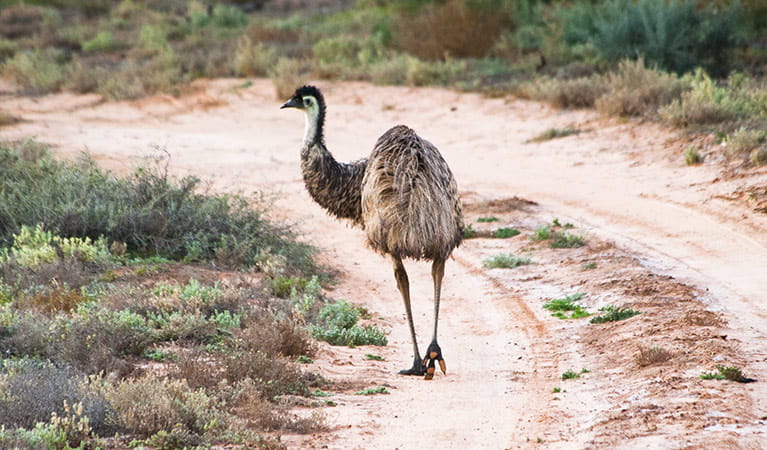
A large number of migratory birds rely on the Yanga National Park red gum wetlands. The park is a great place to see egrets, herons, spoonbills and glossy ibis using the wetlands as a resting, foraging and breeding ground. Walk to the bird hide at Yanga Lake to see great crested grebes and sea eagles. The park is also home to the endangered southern bell frog. This frog's calls' are said to resemble a distant motorbike – listen carefully to see if you can hear it.
- Yanga Lake paddle Kayak Yanga Lake for an outback experience like no other. Wonder at the vast sky reflected in 1200ha of water, and spot wildlife and birds drawn to the wetlands in Yanga National Park.
- Yanga Lake Red Gum bird hide All the family will enjoy spectacular birdwatching and scenic views at Yanga Lake Red Gum bird hide in Yanga National Park near Balranald.
- Yanga Lake walking track Short yet rewarding, Yanga Lake walking track is a family friendly lakeside walk offering scenic wetlands views and spectacular birdwatching in Yanga National Park.
Rich in Aboriginal culture
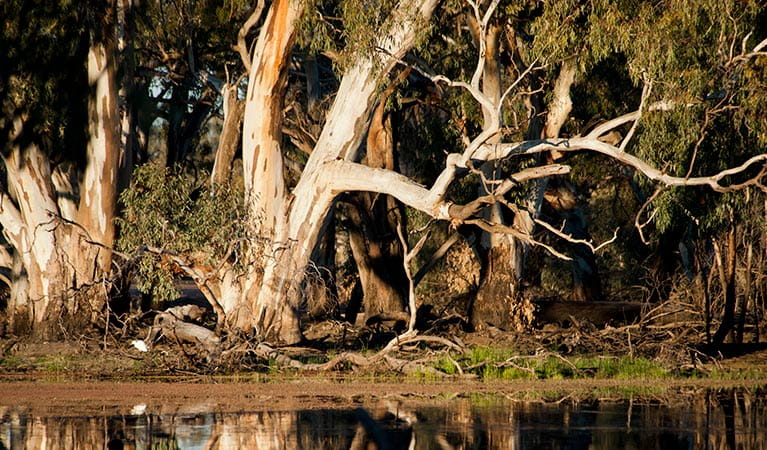
Yanga National Park has a rich Aboriginal history; the park provided resources including waterbirds, fish, and yabbies as well as shelter and medicine. Look closely at the trees in the floodplain where you're visiting – many bear the bark-stripping scars from canoe-making. Today, local Aboriginal people remain connected with Yanga National Park through employment or community involvement.
- Yanga Lake viewing deck Yanga Lake viewing deck offers spectacular birdwatching and scenic wetland views in Yanga National Park, near Balranald.
A remarkable landscape
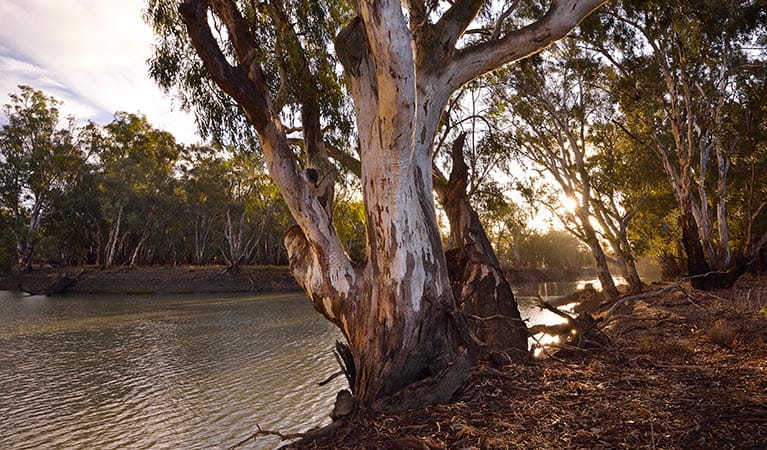
Yanga National Park is blessed with 170km of Murrumbidgee River frontage. The river is great for canoeing or swimming, and its banks provide excellent fishing and camping spots. On your visit, you'll notice the landscape's unique contrast of black and red country. Vegetation on its black soil floodplains comprises river red gum forest and swampland, while its red soil varies from grass to saltbush to woodlands. Come and spot the differences yourself.
- Regatta Beach picnic area Enjoy swimming, boating, birdwatching and paddling in the tranquil lakeside waters of picturesque Regatta Beach picnic area in Yanga National Park, near Balranald.
A pioneering history
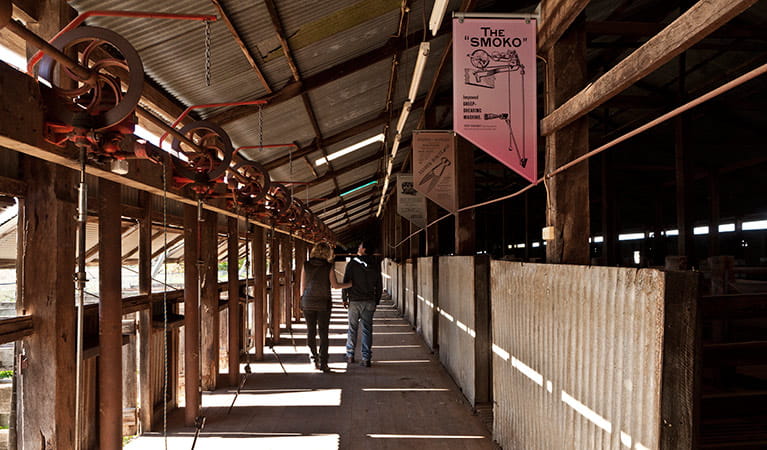
Some of the country's renowned early explorers passed through this area, and you have the opportunity to retrace their steps. Explorers included John Oxley in 1817, Charles Sturt in 1830, Major Thomas Mitchell in 1836 and Burke and Wills in 1860. Visit nearby Balranald to see where Bourke and Wills' party crossed the Murrumbidgee by the Mayall Street punt, then camped by the river in front of Balranald Inn.
- Yanga Woolshed Explore Yanga Woolshed in Yanga National Park. When constructed in the late 1800s, the woolshed was the Riverina’s largest. It offers an insight into Australia’s pastoral history.
- Yanga Woolshed picnic area Located in Yanga National Park, near Balranald in the Riverina, Yanga Woolshed picnic area is an excellent place for a barbecue or spot of fishing on the Murrumbidgee.
Plants and animals protected in this park
Animals
-

Southern boobook (Ninox novaeseelandiae)
The southern boobook, also known as the mopoke, is the smallest and most common native owl in Australia. With a musical 'boo-book' call that echoes through forests and woodlands, the southern boobook is a great one to look out for while bird watching.
-

Common ringtail possum (Pseudocheirus peregrinus)
Commonly found in forests, woodlands and leafy gardens across eastern NSW, the Australian ringtail possum is a tree-dwelling marsupial. With a powerful tail perfectly adapted to grasp objects, it forages in trees for eucalypt leaves, flowers and fruit.
-
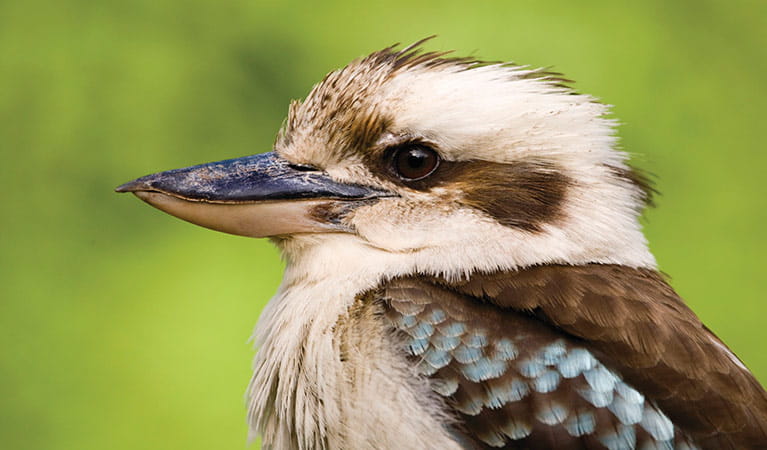
Kookaburra (Dacelo novaeguineae)
Of the 2 species of kookaburra found in Australia, the laughing kookaburra is the best-known and the largest of the native kingfishers. With its distinctive riotous call, the laughing kookaburra is commonly heard in open woodlands and forests throughout NSW national parks, making these ideal spots for bird watching.
Plants
-
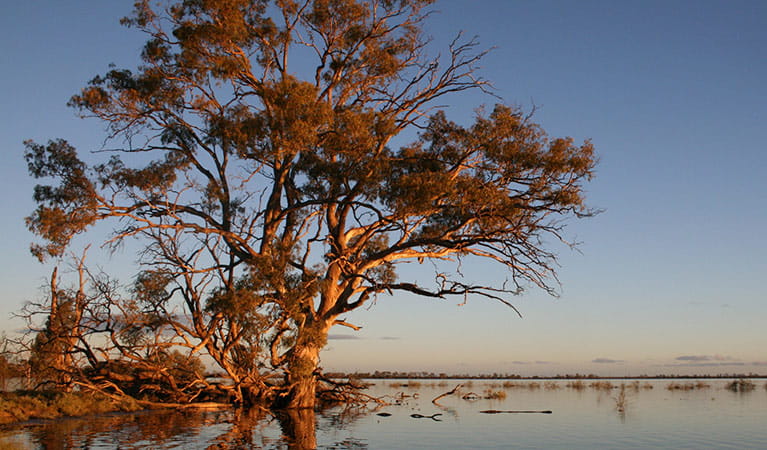
River red gum (Eucalpytus camaldulensis)
Australian native plants, majestic river red gum trees are widespread across Australian inland river systems. The river red gum is a dominant tree species of the Murray-Darling basin which spans NSW, Queensland and Victoria. This iconic native eucalypt grows to a height of 30m and is thought to have a lifespan up to 500-1000 years.
-
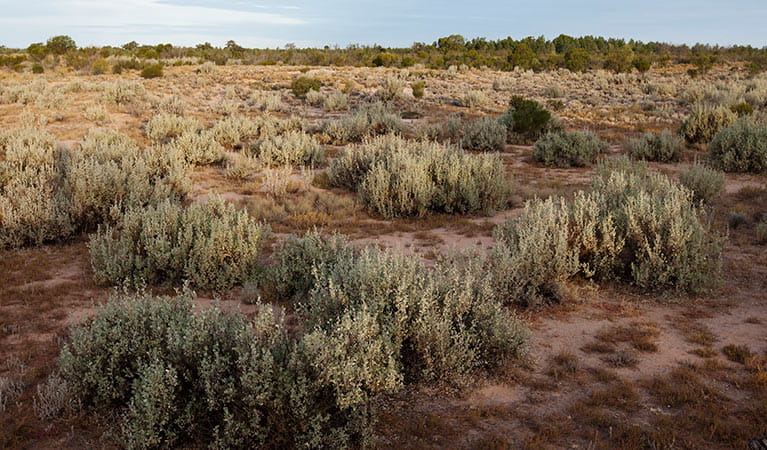
Saltbush (Atriplex nummularia)
A hardy Australian native plant, the saltbush is a small spreading shrub that can withstand dry salty soils such as those found in the desert plains of western NSW. It is grey-white in colour and has small spear-shaped succulent leaves. It flowers from December to April.
Environments in this park
Education resources (1)
What we're doing
Yanga National Park has management strategies in place to protect and conserve the values of this park. Visit the OEH website for detailed park and fire management documents. Here is just some of the work we’re doing to conserve these values:
Preserving biodiversity
River red gum forests in Yanga National Park provide habitat for a multitude of species and are of international significance. Water is a fundamental component of river red gum forests, and contributes physiological, cultural, aesthetic and visual values. These waterways are recognised as having high conservation values, and assessment and monitoring takes place to ensure the ongoing ecological well-being of this value.
Managing weeds, pest animals and other threats
Pests and weeds have a significant impact to the ecosystems within Yanga National Park. NPWS carries out risk assesments for new and emerging weeds to protect biodiversity in this park.
Historic heritage in our parks and reserves
The buildings were constructed around 1870 and are indicative of a period when ‘Yanga’ was one of the Riverina’s most productive pastoral stations. The historic heritage on display at Yanga provides a tangible record of a long and rich history of early pastoral life.
You can also see an online heritage collection from Yanga by viewing ehive, with more than 1400 items archived so far.
Developing visitor facilities and experiences
Improving visitor facilities and creating engaging experiences is an important part of the ongoing work in Yanga National Park. Priorities from the NSW River Red Gum Nature Tourism Action Plan will be implemented, including the establishment of a Murrumbidgee River – Yanga Lake kayaking and canoeing experience. Education resources and signage will be developed and implemented to provide more information about having an environmentally-conscious and safe visit.
Conserving our Aboriginal culture
Yanga National Park will work with the local Aboriginal community to rehabilitate, protect, interpret and promote sites, as appropriate, to the broader community. Significant Aboriginal places and values within the parks will be identified and protected. Archaeological surveys and cultural assessments will be undertaken prior to all works in Yanga to ensure that on Aboriginal sites, artefacts and values are continually respected.
Managing fire
NSW is one of the most bushfire prone areas in the world as a result of our climate, weather systems, vegetation and the rugged terrain. NPWS is committed to maintaining natural and cultural heritage values and minimising the likelihood and impact of bushfires via a strategic program of fire research, fire planning, hazard reduction, highly trained rapid response firefighting crews and community alerts.

